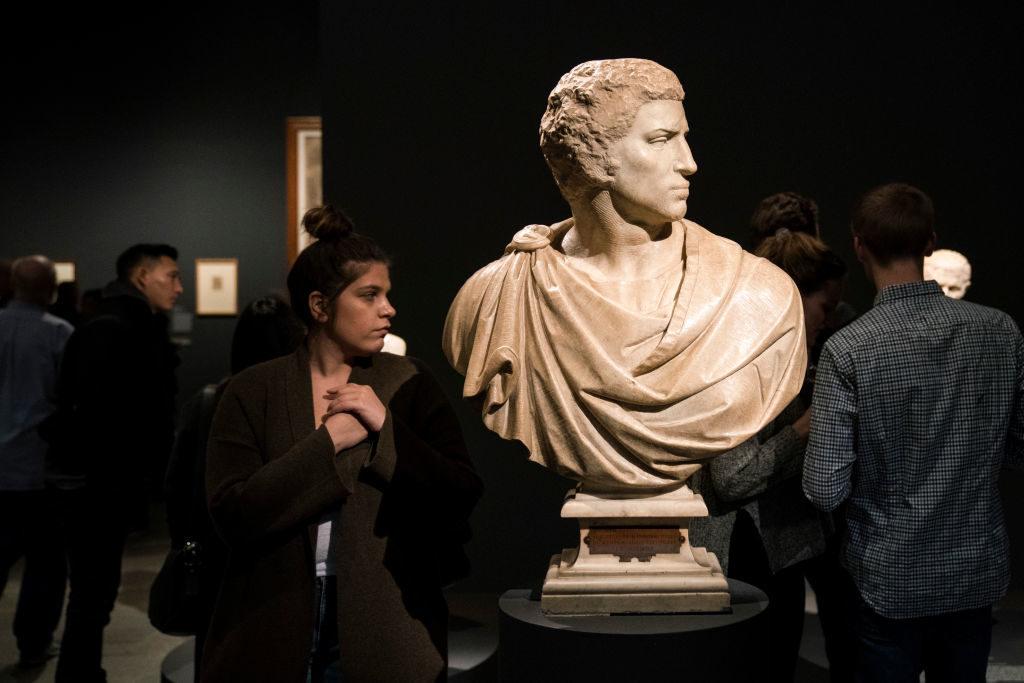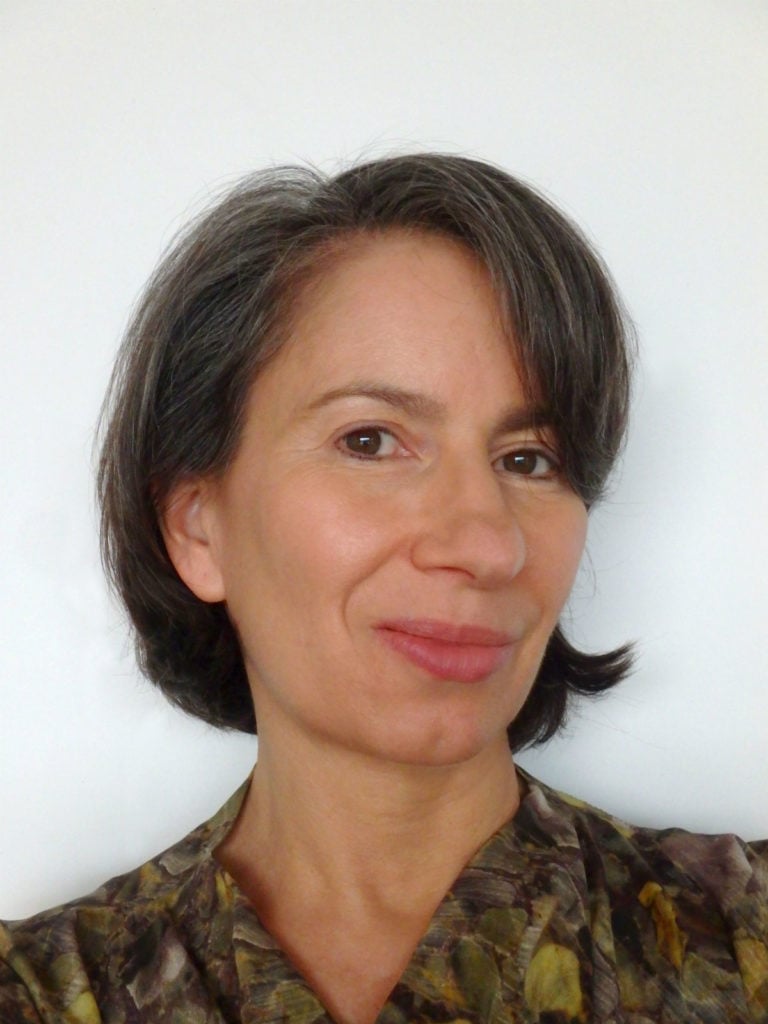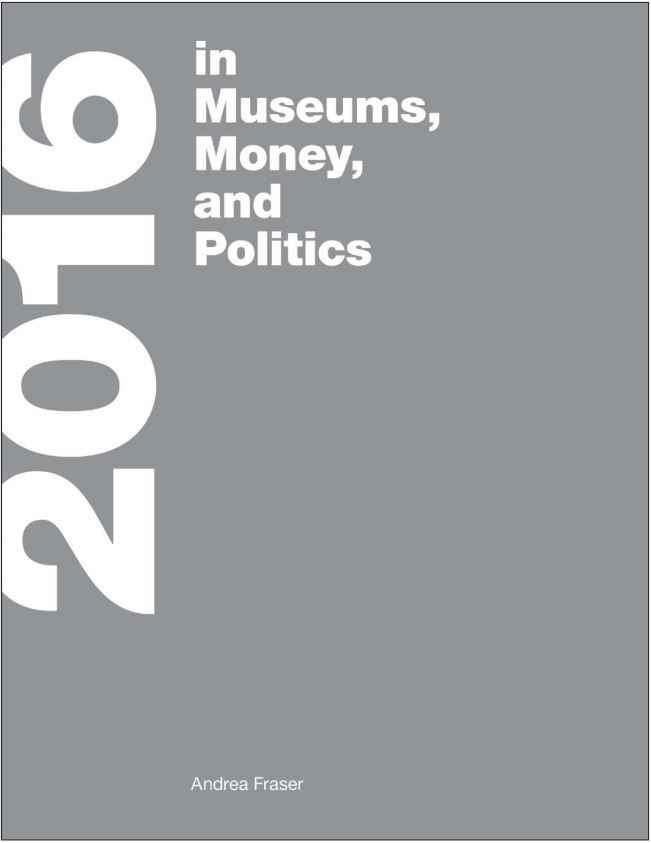Politics
It’s Time to Consider the Links Between Museum Boards and Political Money
Contemporary art museums are enabled by the same forces that are corrupting our politics.

Contemporary art museums are enabled by the same forces that are corrupting our politics.

Andrea Fraser

The following is an excerpt from 2016 in Museums, Money, and Politics, by Andrea Fraser, which was released on May 4, 2018 by Westreich Wagner Publications, the CCA Wattis Institute for Contemporary Arts, and the MIT Press.

Andrea Fraser. Image courtesy MIT Press.
2016 in Museums, Money, and Politics examines the intersection of electoral politics and private nonprofit arts organizations in the United States at a pivotal historical juncture. It documents the reported political contributions made by members of the boards of 128 arts organizations in the course of the 2016 US election cycle and its aftermath. Located throughout all 50 states and the District of Columbia, these organizations include the majority of art museums in the United States with budgets over $2.5 million that exhibit contemporary art. The research presented in this book includes records of over 36,000 political contributions linked to 2,411 of the roughly 5,460 individuals serving on the boards of these organizations, revealing the scale of the interface between political campaign finance and cultural patronage.
The 2016 US general election transformed politics nationally and globally. Through campaigns bolstered by attacks on vulnerable populations, the vilification of the media and “cultural elites,” and proposals to curtail civil rights and civil liberties, it elevated to the White House a billionaire political neophyte who went on to assemble the wealthiest cabinet in US history. It was also the most expensive election cycle in US history, with over $6.4 billion raised for presidential and congressional races combined. Of these contributions, 68 percent came from the 0.68 percent of the US adult population that gives over $200 to political campaigns, while over 50 percent of the total amount given came from just 350 wealthy families and their companies.
The growing political influence of wealth on, and in, government in the United States has led social scientists and other observers of politics to conclude that our system of government is no longer a democracy—government by the people through elected representatives. Instead, the United States has become a plutocracy—government by the wealthy. Many have linked the growing political power of wealth in the United States to the combination of high levels of income inequality and our increasingly deregulated system of private campaign finance. Together, they create a vicious cycle of economic and political inequality, as some of the wealthiest citizens use their ballooning resources to promote legislation that protects their wealth and the profitability of their businesses, giving large amounts to politicians who vow to cut taxes and curtail the financial, environmental, consumer, and labor regulations that impact the profitability of their companies.
Arts organizations in the United States also have benefited from increasing concentrations of wealth. Almost all public and nonprofit arts organizations in the United States are structured as charitable corporations governed by self-appointed voluntary boards, which manage their collections and assets in “public trust.” Most of these boards also support their organizations with financial contributions. As the income share of the top 1 percent doubled from 11 percent in 1984 to over 22 percent in 2016, giving to the arts, culture, and humanities grew from $3.85 billion to $18.21 billion. The size and number of museum boards and the wealth of their members also grew, funding new museums and museum buildings, high salaries for senior staff, and the purchase of art at skyrocketing prices, while raising concerns about the influence of board members and patrons on museum programs and acquisitions. The 128 arts organizations included in this study had combined total revenues of over $4.2 billion in 2015. Of those revenues, roughly 10 percent came directly from public sector sources, while an additional 15 to 30 percent can be calculated as an indirect governmental subsidy provided by their tax-exempt status. And yet, despite the common identification of many art museums as “public” institutions, most operate with little or no democratic input, oversight, or recognition of government support. Instead, with well-publicized fundraising galas and donor recognition on nearly every wall, many art museums have become prominent public showcases for highly concentrated private wealth, identifying that wealth with generosity, creativity, and cultural accomplishment.
This study shows that museum boards have also become prominent hubs of political finance. Over 42.5 percent of the 5,458 individual board members researched were found to make political contributions of over $200, the threshold for reporting, dwarfing the 0.68 percent of the US adult population as a whole who made such contributions during the 2016 election cycle.
The extent of the interface between cultural patronage and campaign finance revealed by this study raises significant questions for the field of art. Do private, nonprofit arts organizations funded and governed by wealthy patrons serve to legitimize government by and for the wealthiest members of society? Are the political activities and influence of the board members of arts organizations consistent with their trusteeship of our collective cultural heritage? These questions are not new, but they take on new urgency as the political influence of highly concentrated wealth in the United States increases, and as a growing number of politicians promote nationalism and intolerance to secure voter support for plutocratic governance, attacking the civil rights and liberties upon which depend not only the arts, but an open and democratic society.
This book developed out of my personal sense of horror at discovering supporters of radical right-wing politicians serving on the boards of arts organizations with which I work and whose missions are directly threatened by the policies these politicians advance. I found that horror to be shared by other members of the art community—and shared broadly and deeply enough to find support for this book with an arts organization, two art patrons, and a highly respected academic press. As the research for the book developed, however, I became increasingly convinced that the rise of radical right-wing politicians, and their elevation to political power by a minority of voters, must be understood as symptoms of the increasingly entrenched structural inequalities of American society. Many of these radical right-wing politicians campaigned as “populists,” inveighing against political, cultural, and even economic elites. However, the plutocratic policies they have pursued post-election reveal those “populist” platforms to be nothing more than a cynical means to secure political power. Nevertheless, it must be recognized that the radical Right rose to power by exploiting the anger and desperation of people who have been disenfranchised by the mainstreams of both major political parties, which increasingly respond only to the interests of the affluent and their businesses. These voters have been marginalized culturally and economically, as well as politically, by a plutocratic society and its institutions, including many cultural institutions.
As an artist who benefits directly from these cultural institutions, and from the generosity and service of their board members and patrons, I undertook this project with a sense of both urgency and anxiety. I believe that cultural institutions can and should play an important role in democratic societies, as public repositories of a complex and heterogeneous collective cultural heritage, and as spaces where divergent voices can enter into public dialogue. In fact, this belief echoes the mission statements of many of the arts organizations researched in this study. I also believe that these institutions, and their capacity to fulfill their role in democratic societies, face dire threats. These threats derive not only from radical right-wing proposals to curtail their tax benefits or, alternately, to crack down on and deregulate their political activities. Nor do they derive only from the threat to an open, tolerant, and diverse society posed by politicians who undermine civil rights and civil liberties and attack journalists and artists. They also derive from the broader threat to democracy itself that is posed by entrenched economic and political inequalities, which have become the breeding ground for political polarization and extremism. This threat is not only external to arts organizations, but may also be found in the very structure of their governance and support, and in the economic system that turns many into the perpetual supplicants and grateful beneficiaries of highly concentrated wealth.
However, I also fear that this project may pose its own threats to arts organizations and their missions: the threat of fueling political polarization and extremism in their orbits, and of politicizing—or further politicizing—organizations that endeavor to stay above the political fray. Of course the most obvious and immediate threat is that of alienating the patrons on whose voluntary service and generosity almost all US arts organizations depend. Nothing may be more infuriating, or hurtful, than having one’s good intentions questioned, above all by those one aims to help. While the political and sociological language and analysis of this introduction require me to characterize groups and individuals as “the wealthy” and “the affluent,” I am mindful that these terms reduce diverse individuals with varied lives, interests, attributes, attitudes, and resources to homogeneous categories, emptying them of their full humanity. I also am mindful that not all of the board members researched for this book fall into these categories, or that of “patron,” as these boards also include artists, scholars, community volunteers and advocates, museum professionals and academic administrators, and a number of public officials. This project, which required researching thousands of these board members, has greatly increased my appreciation for their voluntary service and the range and depth of their commitment to their organizations and to the arts. My hope is that at least some of the subjects of this study will be open to considering their roles in the political and economic context that it frames.
While this publication focuses on political and cultural patrons and their patronage, the influence of money in politics and in art is not just a matter of supply, but also of demand. The raising of billions of dollars by politicians and Political Action Committees has been made necessary by the skyrocketing price of political campaigns, with the vast majority of the funds being paid out to media outlets for political advertising and to growing legions of political consultants, lawyers, public relations firms, and, of course, fundraisers. Similarly, the billions of dollars raised by arts organizations support an industry of often highly paid museum directors and other top arts administrators, curators, scholars, architects and high-end construction firms, art shippers, and insurers, and, of course, the ambitious projects and expensive products of artists like me, whose similarly skyrocketing prices add significantly to the cost of developing, insuring, and maintaining museum collections and programs. Artists, museum professionals, and patrons alike must consider whether their specific, personal, artistic, professional, and economic interests in these systems are consistent with their interests as citizens of an open and democratic society.

2016 in Money, Power, and Politics by Andrea Fraser, (MIT Press, 2018).
©Andrea Fraser, CCA Wattis Institute, and Westreich Wagner Publications. Reprinted by arrangement with the MIT Press, Cambridge, MA.
Andrea Fraser will be at the New Museum on Thursday, May 24, for an artist talk and book signing to celebrate the release of 2016. More information online.